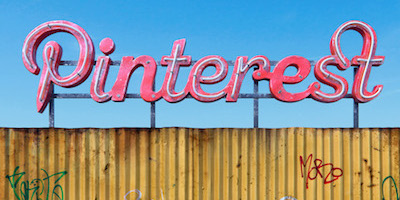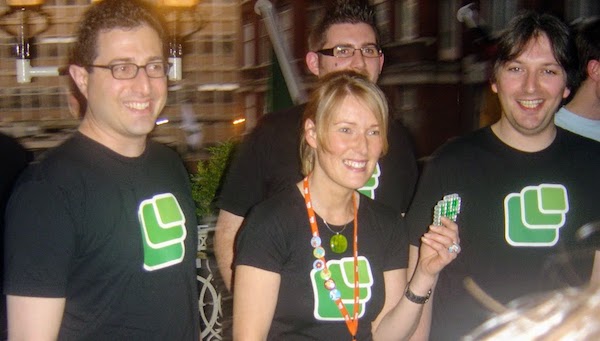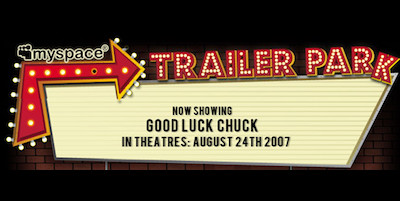Decaying Silos as dead malls
Social Decay by Andrei Lacatsu changes the metaphor for the big social sites that indieweb calls silos. Instead, he renders them as decaying storefronts.




Decaying malls that used to be the place to be seen but are now losing out to the open web is a good metaphor for the coming transition. It reminds me of the old Yahoo billboard in SF, and MySpace’s Trailer Park:
Because this is where we are with Facebook now - it has always felt like a mall, as Gibson said:
I was never interested in Facebook or MySpace because the environment seemed too top-down mediated. They feel like malls to me.
Now we want a more organic, handmade web again.
This also made me think about how the silos degrade our view of the web, insisting that we give them custom markup so our posts fit into their rigid worldviews, each one with a photo preview and title, interchangeable, fitting into their product racks.
So I thought I'd use his images to give each silo a custom preview of this post.
If you share this on twitter, you'll see the twitter image.
On facebook the soi-disant Open Graph is desired - both of these demand separate metadata to work.
Pinterest has a share button that wants further data in its markup.
Google won't agree what it wants. G+ says "use microdata", but will use facebook markup if no google mandated markup is there, and it ignores JSON-LD.
Google search leads you down the endless JSON-LD void of schema.org (but also wants a meta tag for description).
So each silo wants it's own special custom markup - mostly to display the same image-heavy degraded view of the real site.
Even Slack gets in on the act - it wants oEmbed markup with a separate URL to fetch, a retro format from Yahoo and Pownce, so I made that too.
Now, this post also has microformats 2 markup, so if you use indieweb tools, and post type discovery you'll see that microformats make you smile.



 dlanezed liked this 8 years ago
dlanezed liked this 8 years ago R̷̫͌̽͜y̴͖̺͝ȁ̶̼̫͝n̵͕͠ ̴̢̽O̵̤̗̾̈l̵͇͎͝e̷̥̰͗̍s̸̰͝ͅ liked this 8 years ago
R̷̫͌̽͜y̴͖̺͝ȁ̶̼̫͝n̵͕͠ ̴̢̽O̵̤̗̾̈l̵͇͎͝e̷̥̰͗̍s̸̰͝ͅ liked this 8 years ago Vojin Kovačević liked this 8 years ago
Vojin Kovačević liked this 8 years ago Bernd Nurnberger liked this 8 years ago
Bernd Nurnberger liked this 8 years ago Kosso 🌀 liked this 8 years ago
Kosso 🌀 liked this 8 years ago Marty McGuire liked this 8 years ago
Marty McGuire liked this 8 years ago Tim Colby liked this 8 years ago
Tim Colby liked this 8 years ago Yonas A liked this 8 years ago
Yonas A liked this 8 years ago Michael Goasdoue liked this 8 years ago
Michael Goasdoue liked this 8 years ago Werner Habel liked this 8 years ago
Werner Habel liked this 8 years ago William Shotts liked this 8 years ago
William Shotts liked this 8 years ago murph nj liked this 8 years ago
murph nj liked this 8 years ago Joe Nicholson liked this 8 years ago
Joe Nicholson liked this 8 years ago Chris Aldrich liked this 8 years ago
Chris Aldrich liked this 8 years ago Gareth Jordan reposted this 8 years ago
Gareth Jordan reposted this 8 years ago William 🌹 reposted this 8 years ago
William 🌹 reposted this 8 years ago Ronny Hippler liked this 8 years ago
Ronny Hippler liked this 8 years ago Tom Forth liked this 8 years ago
Tom Forth liked this 8 years ago Zach Holman liked this 8 years ago
Zach Holman liked this 8 years ago roland j. ruttledge liked this 8 years ago
roland j. ruttledge liked this 8 years ago Robert Diber liked this 8 years ago
Robert Diber liked this 8 years ago Steve Adams liked this 8 years ago
Steve Adams liked this 8 years ago Mani Taf liked this 8 years ago
Mani Taf liked this 8 years ago Akira Yamanita liked this 8 years ago
Akira Yamanita liked this 8 years ago 🍌 John 🍌 liked this 7 years ago
🍌 John 🍌 liked this 7 years ago Proofreader.io liked this 7 years ago
Proofreader.io liked this 7 years ago Bernie Beats Trump reposted this 6 years ago
Bernie Beats Trump reposted this 6 years ago Will Kaufman reposted this 6 years ago
Will Kaufman reposted this 6 years ago doctorow_no_bb reposted this 6 years ago
doctorow_no_bb reposted this 6 years ago Adda liked this 6 years ago
Adda liked this 6 years ago Angus McIntyre liked this 6 years ago
Angus McIntyre liked this 6 years ago Tom Swiss, royal jester to the court of Norton I liked this 6 years ago
Tom Swiss, royal jester to the court of Norton I liked this 6 years ago Rhy Moore liked this 6 years ago
Rhy Moore liked this 6 years ago Joe Crawford liked this 6 years ago
Joe Crawford liked this 6 years ago Nicole Lazzaro 🌑 Remember to Breathe #BLM liked this 6 years ago
Nicole Lazzaro 🌑 Remember to Breathe #BLM liked this 6 years ago Dr. Ellie Lockhart, endure and survive reposted this 6 years ago
Dr. Ellie Lockhart, endure and survive reposted this 6 years ago 30 to 50 Cakes That Are Lies liked this 6 years ago
30 to 50 Cakes That Are Lies liked this 6 years ago Predrag Gruevski liked this 4 years ago
Predrag Gruevski liked this 4 years ago Joe Gregorio
Joe Gregorio Robert Wallis
Robert Wallis Kevin Marks
Kevin Marks Richard MacManus
Richard MacManus Kevin Marks
Kevin Marks Paul Walsh
Paul Walsh Sudha Jamthe
Sudha Jamthe Doug Hanke
Doug Hanke Gift Love
Gift Love Bruce Lawson
Bruce Lawson Joseph Dickson
Joseph Dickson Werner Habel
Werner Habel Chris Heilmann
Chris Heilmann Dan Brickley
Dan Brickley Stuart Langridge
Stuart Langridge Colin Bendell
Colin Bendell ΧΡΙΣΤΌΦΟΡΟΣ bɝːd
ΧΡΙΣΤΌΦΟΡΟΣ bɝːd Alex Russell
Alex Russell Aaron Parecki
Aaron Parecki Mike Harley, Goblin Herder
Mike Harley, Goblin Herder Chris Messina
Chris Messina Laurence Warner
Laurence Warner Anne Walk
Anne Walk Mastodon : @louiscouture@qoto.org
Mastodon : @louiscouture@qoto.org